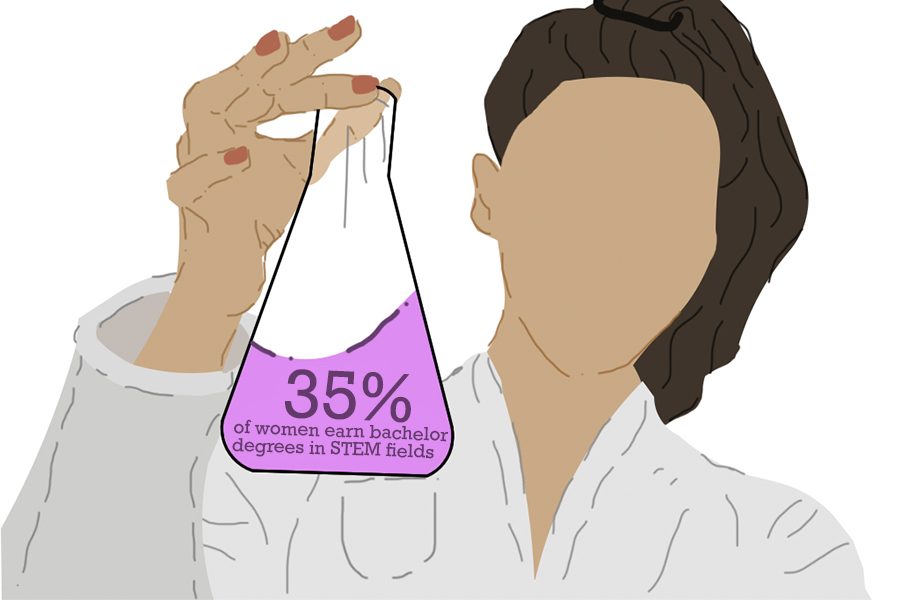Girls now encouraged to pursue education in STEM fields
November 5, 2018
When my mom was a senior in high school her adviser told her she would make a great housewife. Not a great lawyer, or a great teacher or a great nurse like she dreamed of one day becoming. She attended a private Catholic high school in the early 1980s, and this sexist treatment was a normal part of the classroom environment.
Growing up, she would tell me stories about her junior year physics teacher who would purposely try and make classes with higher percentages of females enrolled more difficult in hopes that they would drop the course and how many of her teachers got annoyed when they saw girls taking higher level math and science classes.
Females were not expected to be engineers or doctors or mathematicians. In fact, they were discouraged from it.
My mom has worked as a successful nurse for the past 33 years. Not once did she read into the “advice” her teachers tried to sell her. She knew she could achieve anything she set her mind to regardless of whether other people thought her capable, and she inspires me to live the same way.
With the dawn of the #MeToo movement a year ago and the passionate discussions currently taking place surrounding the wage gap in the country, it seems like women’s rights are finally getting the attention they deserve.
However, how much has really changed in high schools? I began to wonder how Naperville Central compares when it comes to women in STEM and higher level math and science courses.
On my first day of Research and Design this semester I was not shocked that I was one of only six girls in the class. Historically, engineering has been a boys club with over 83 percent of those currently employed in the field being male, according to a study conducted by the Bureau of Labor Statistics.
To some, six might seem like a disheartening number, but it fills me with hope for the future. Things are changing, and girls are branching out of the norms that society has placed on them for decades, proving that women are just as capable at excelling in challenging fields as men.
Sex has no relationship with the ability to complete multivariable calculus or design complex mechanical systems.
Decades ago, the number of females enrolling in these types of classes would have been miniscule, and the reception from teachers and classmates would not have been very positive. But now, generations of females are fighting to make their mark and diversify the classroom, and I am proud to be one of them.
With the creation of the Girls Excelling in Math and Science (GEMS) Club, which strives to encourage girls from every grade to explore different science and technology fields, and with support from various teachers and counselors, Central has produced a positive learning environment that I think is vital to motivating any student of any gender to dream big and make an impact in their world today.
Even though these organizations and this kind of support is highly valuable, I think even more changes can be made in the future. There needs to be more of an effort made by teachers to close these gender gaps in technology and design-based classes, and students need to be willing to get outside of their comfort zones and try these hands-on courses.
So much has changed for women in the past 30 years, and I am excited to see what the future has in store. But one thing is certain, high school girls will not let their gender hold them back from attaining their goals.








